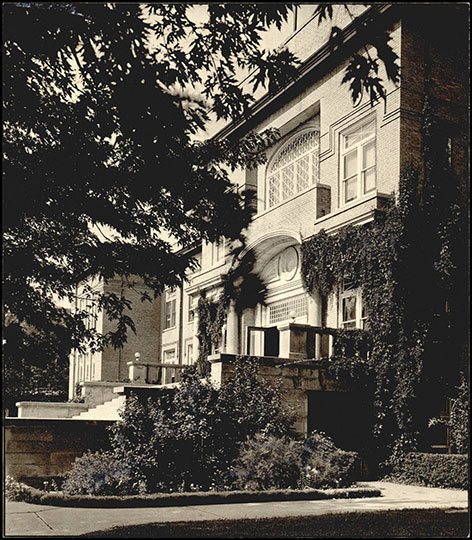Oklahoma College for Women
When established in 1908, the Oklahoma College for Women, was originally called the Oklahoma Industrial Institute and College for Girls. It would become the Oklahoma College for Women in 1916, changing to the Oklahoma College of Liberal Arts in 1965 when it became a co-ed institution. It was renamed for the final time in 1974 as the University of Science and Arts of Oklahoma. For more than a hundred years, the school has been teaching liberal arts education to generations of Oklahomans [1].
Establishment as Oklahoma Industrial Institute and College
The Oklahoma Industrial Institute and College for Girls was founded by the first state legislature. It was located by the second state legislature in Chickasha, Grady County. It served as one of the first colleges in the state catering to the women of Oklahoma [1].
Campus and current use
The University of Science and Arts of Oklahoma is spread over 75 acres. The college consists of nearly 20 buildings and houses a 140-acre farm that includes an experiment station maintained by its department of biology. Today, the school offers a full science and arts program, with nearly 40 majors. The campus was listed as a National Historic District on the National Register of Historic Places in 2001 [2].
Past Chickasaw alumni
Chickasaw alumni have included “Te Ata” (Mary Thompson) and Mary “Ataloa” Stone McClendon. Te Ata graduated from the college in 1919. It was then called the Oklahoma College for Women. A life-size bronze statue of her can be found on display at the college. [3].

Photo courtesy of the Oklahoma Historical Society
Cousin to Te Ata, Ataloa was a renowned advocate for First American education and fine arts. She was a nationally known vocalist and educator. Ataloa attended Oklahoma College for Women, but also Columbia University, the International Institute of John D. Rockefeller and the University of Redlands, among other institutions. She gave up her career as a performer to teach at Bacone College [4].
Historic location
A Chickasaw family donated the land on which the college was built. The Sparks family donated 20 acres of Nellie Sparks’ Chickasaw allotment land after her death to build the school [5].
A dormitory on the college was dedicated to Nellie Sparks in 1914. She died in 1904. Due to its history and architecture, Nellie Sparks Hall is currently on the National Register of Historic Places. Even with renovations, there have been few changes to the dormitory since its construction [5].
[1] Savage, Cynthia, "Oklahoma Historical Society," [Online]. Available: https://bit.ly/3k4XPuM. [Accessed 8 10 2021].
[2] Waymarkly, "Waymarking," [Online]. Available: https://bit.ly/3qbM7T4. [Accessed 28 10 2021].
[3] USAO.edu, "USAO.edu," [Online]. Available: https://bit.ly/3ECSVgC. [Accessed 8 10 2021].
[4] Chickasaw Nation Hall of fame, "Chickasaw Hall of Fame," [Online]. Available: https://bit.ly/3EMOIXH. [Accessed 28 10 2021].
[5] Waymark, "Waymark," [Online]. Available: https://bit.ly/3BNHq4b. [Accessed 8 10 2021].